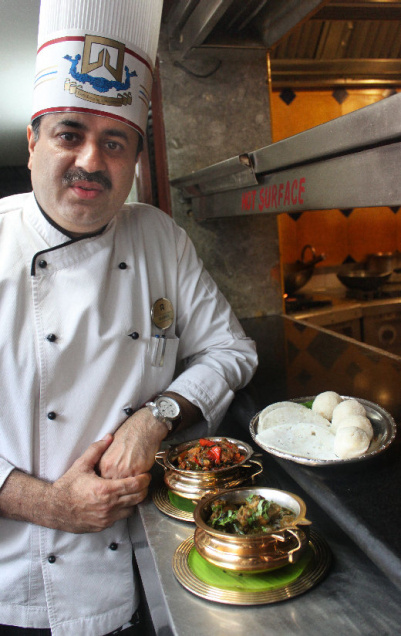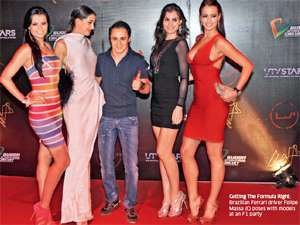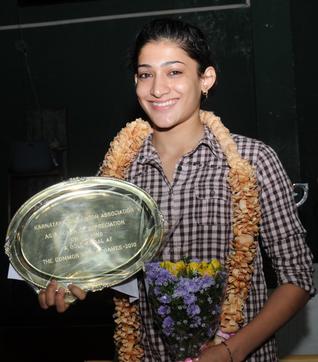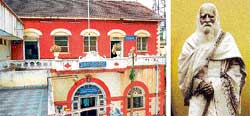Community cuisine has entered the food scene in a big way, with restaurants promoting traditional flavours to attract customers.
After international cuisines — Chinese, Thai, Mexican or Italian — have dug their heels into the country’s metros, it is now the turn of community cuisines to capture the imagination of the eating-out population.
And instead of the usual State-centric fare like the Gujarati thali or the Kerala sadya, it is Bohri, Coorgi, Mudaliar, Kayastha cuisines that are in the limelight.
“Community cuisines capture the culture, tradition, geography, history and the quirks that regional influences bestow on the taste,” says Rajkamal Chopra, Executive Chef at WelcomHotel Sheraton. He and his team have been researching traditional cuisine in different communities, and flying in specialised chefs to promote those regional dishes.
Take South India’s Mudaliar community, which was one of the first to be showcased. Traditional kal chattis (mud pots) and vadakam (a mixture of onion, garlic and other spices) were used for that distinctive flavour of the community’s famous fish dish, Meen Kozhambu. For vegetarians, Vazhaipoo Vadai — vadas made using banana flower, Bengal gram and coconut — and yam dish Karnakazhangu Varuval were chosen. The non-vegetarians were treated to traditionally spiced lamb, Attu Kaal Kozhambu, and a host of other dishes.
To recreate the Dawoodi Bohra kitchen, Chef Ismail Khan was flown in from Mumbai. With the community’s roots in Yemen, the cuisine has many Arabic and West Asian influences. Bohra khichda (a delicacy made from mutton, wheat and pulses), kheema khichdi (minced meat pulao), Lagan ni seekh (layered minced meat made with onions, bread and topped with eggs), kheema samosa, mutton kaari-chawal (spiced coconut milk-based stew served with fragrant basmati rice topped with fried onions) were some of the specialities.
For the vegetarians, Dal Chawal-Palida was the main dish. Toor dal sauted with onions and tomatoes accompanies the basmatic rice and Palida is made from the stock of the cooked toor dal, along with either drumstick, bottle-gourd or sweet potato.
SHARING THE THAAL
Before adopting modern dining methods, Bohras would eat together from a large, round plate or thaal which was served with all the dishes placed on the shining platter. The diners – eight to a thaal– sit on the floor, and the circular thaal signifies that all are equal before Allah. This practice is followed even today during marriages and other celebrations. The thaal is placed on a round, elevated metal ring called the tarana, and each meal begins with a grain of salt, which is believed to clear the taste buds and allow better relishing of the flavours. The first, though not the only, item is a sweet and during feasts it is common to have as many as three desserts. No one can leave the thaal till every member has finished; else it is considered disrespectful not only to the rest of the diners but also the food.
The Bohras have many traditional sweets. Malida (sweet made with wheat and jaggery), Lacchka (cracked wheat halwa, usually made on the first day of the Bohra calendar), and Kalamdo (rice mixed with yoghurt, cream and sugar). Sancha ni ice cream (hand-cranked ice-cream) is a coveted dessert for special occasions.
Bohras also make a variety of soups to accompany the rice dishes. Some are cold, such as Kacchi Sarki (made with toor dal and garnished with cucumber, tomatoes, spring onions and beaten yoghurt), while the hot soups include Sarka (made from toor dal, groundnut and coconut).
PUTTU PARADISE
The Coorgi community too is known for its love of food and boasts a vast choice of traditional dishes. Largely rice eaters, they love a fragrant local variety — sannakki.
Rice dishes here come in multitude forms. Breakfast means an assortment of puttus (steam-cooked dishes). While Kerala puttus are of two-three types, the Coorgi ones include Kadambuttu (ball-shaped puttus), Thaliya puttu (flat puttus steamed on plates), Paaputtu (cooked with milk and shredded coconut), Nooputtu (noodle-like thread puttu), Od puttu (baked on a flat mud pan), Nuch puttu (made of broken rice), Madd puttu (made using a medicinal leaf), and Koovale puttu (made with ripe bananas or jackfruit and steamed in folded Koovale leaves or banana leaves). Wow, now isn’t that a massive variety of breakfast options?
Coorgis are essentially non-vegetarian. Pork is a hot favourite, cooked as Pandi curry and served with rice. Meat, chicken and fish are the other musts which are usually fried, roasted, grilled or made into curry. Meat and fish are also pickled by salting, smoking and drying, or turned into spicy chutneys that accompany rice. Just like in Mizoram, here too dried meat and fish are used during the long monsoon season, when people are mostly homebound.

Chef Raj Kamal with Coorgi food
Coorg’s vegetable dishes largely owe to the abundance of forests in this fertile region. Baimbale curry is prepared from tender bamboo shoots, Kumm curry from wild mushrooms, Chekke curry from unripe jackfruit, Chekke Kuru curry from jackfruit seeds, Baale Kaamb curry from the stem of the banana plant, Kemb curry from the leaves of the colocasia plant, and Maange curry from raw mangoes. The basic ingredients in any traditional Coorg curry include coconut, ground with onion, garlic and a selection of spices.
NUTTY DELIGHTS
Food from the Kayastha community, on the other hand, is characterised by the generous use of ingredients such as almonds, cashew, and saffron. Rich as it may be seem, its reputation for being the most secular food in the country has given it high acceptance among foodies. Specialities of the Mathur community, this cuisine consists of dishes such as Badam Pasande (flat pieces of lamb cooked in an almond gravy), Takey Paise (besan rounds, that are fried and then curried), Yakhni Pulao, Kacche Kheeme Ke Kofte and Shammi Kebabs stuffed with mint and onions. The cuisine typically consists of red meats, an assortment of masalas, and lentils.
WelcomHotel Sheraton in the Capital, in fact, has made community cuisines its USP. While its Dakshin restaurant has been showcasing cuisine from South India, Bay Watch, its buffet square, has been experimenting with food from the North, East and West of the country. Delhi’s Rajdhani restaurant too prides itself on its community cuisines from the West.
A recent innovation is the use of SMS alerts for community cuisines. Often enough, messages pour in offering doorstep delivery of Kashmiri Muslim fare or Chettiar specialities. “And this is going to take the popularity of community cuisine to the next step,” says a die-hard foodie.
source: http://www.thehindubusinessline.com / by Preeti Mehra





